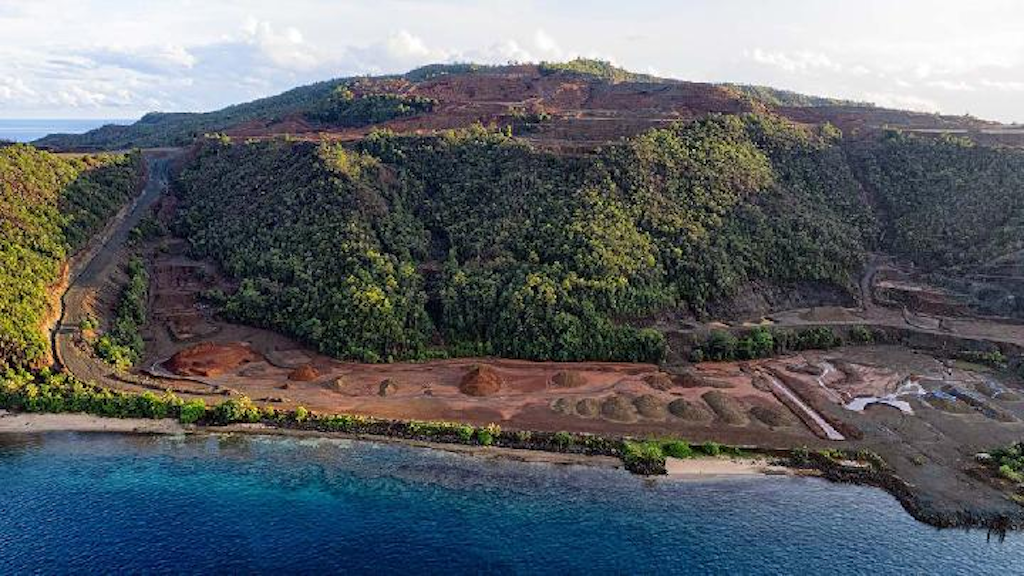When a Paradise Faces the Threat of Exploitation
Raja Ampat, an archipelago at Papua’s western tip, is known for its stunning natural beauty and marine life. It has long been recognized as one of the most biodiverse marine areas on the planet. Its stunning beauty, from pristine coral reefs to rich tropical forests, showcases remarkable ecological diversity and uniqueness. This makes Raja Ampat a global marine tourism icon and a powerful symbol of conservation success. However, behind this breathtaking scenery, Raja Ampat stands at a critical crossroads in its development path. It must choose between preserving nature and allowing extractive industries like mining to enter the region.
The entrance of mining operations into Raja Ampat has sparked intense debate. On one hand, local governments and business sectors see economic opportunities through mineral exploration. On the other hand, environmentalists and indigenous communities raise concerns about irreversible ecosystem damage. International observers also worry about threats to ecosystems preserved for thousands of years. This article explores Raja Ampat’s conservation status, mining presence, and potential impacts on environment, society, and local culture.
Raja Ampat: A Globally Recognized Conservation Area
Raja Ampat is not just a tourist destination. It is part of the Coral Triangle and has been designated as one of the most important marine conservation zones by numerous global organizations, including UNESCO and The Nature Conservancy.
The region is home to over 550 coral species, 1,500 species of reef fish, and around 700 species of mollusks. On land, its tropical forests shelter rare wildlife such as the Waigeo cuscus, birds of paradise, and endemic Papuan orchids.
With its dual status as a marine and terrestrial conservation zone, any form of heavy industry, such as mining, should undergo stringent environmental assessments. Moreover, this region holds not only ecological significance but also deep spiritual and cultural meaning for the indigenous communities who have lived in harmony with nature for centuries.
Mining Enters the Scene: Strategic Locations Near Conservation and Communities
In recent years, several mining business permits (IUPs) have been issued within the administrative boundaries of Raja Ampat. One of the most highlighted areas is Kawe Island and its surroundings, located near both marine conservation zones and indigenous settlements.
Although some of the mining sites are technically outside core protected areas, their geographic proximity to sensitive ecosystems like coral reefs and critical wildlife habitats poses serious concerns. In fact, several exploration zones have been identified within a range that may directly affect both conservation zones and community settlements.
The core issue isn’t only about the mine locations themselves, but also about the secondary impacts: road construction, land clearing, sediment runoff, chemical waste, and population influx, each carrying the potential to disrupt fragile ecosystems and social dynamics.

https://statik.tempo.co/data/2025/06/06/id_1403879/1403879_720.jpg
Real Threats to the Environment, Society, and Culture
1. Environmental Threats
Mining activities in topographically sensitive regions like Raja Ampat carry high ecological risks. Land clearing, chemical usage, and waste discharge can damage natural balances. Sedimentation from excavation activities may bury coral reefs, kill marine life, and cause long-term damage to the tourism and fishing sectors, both of which are vital to the local economy.
2. Social Threats
The arrival of mining operations also brings social tensions, especially between supporters and opponents within local communities. Indigenous groups who depend on the sea and forests feel that their way of life is under threat. Land disputes, displacement, and unequal access to economic benefits further complicate the issue.
3. Cultural Threats
For the people of Raja Ampat, nature is not just a resource—it is part of their spiritual and cultural identity. Mountains, forests, and seas are considered sacred, protected through customary laws passed down across generations. Disregarding these values through exploitative mining projects risks eroding an invaluable cultural heritage.
The Future of Raja Ampat Is in Our Hands
Raja Ampat now stands at a pivotal moment: to continue on a sustainable conservation path or to give in to the lure of short-term exploitation. This decision will not only shape the future of one region but also reflect Indonesia’s global credibility as a megabiodiverse nation committed to sustainable development.
Both central and regional governments must thoroughly evaluate the issued mining permits, prioritizing environmental integrity and respecting indigenous participation. The world is watching—what happens in Raja Ampat will symbolize how Indonesia protects its natural and cultural heritage amidst growing industrial pressures.
If conservation can go hand in hand with the prosperity of local communities, then Raja Ampat will not only remain a natural paradise but also a global model for harmony between people and nature.
Read other Articles: COP26 Outcomes: Assessing Commitments and Global Impact





